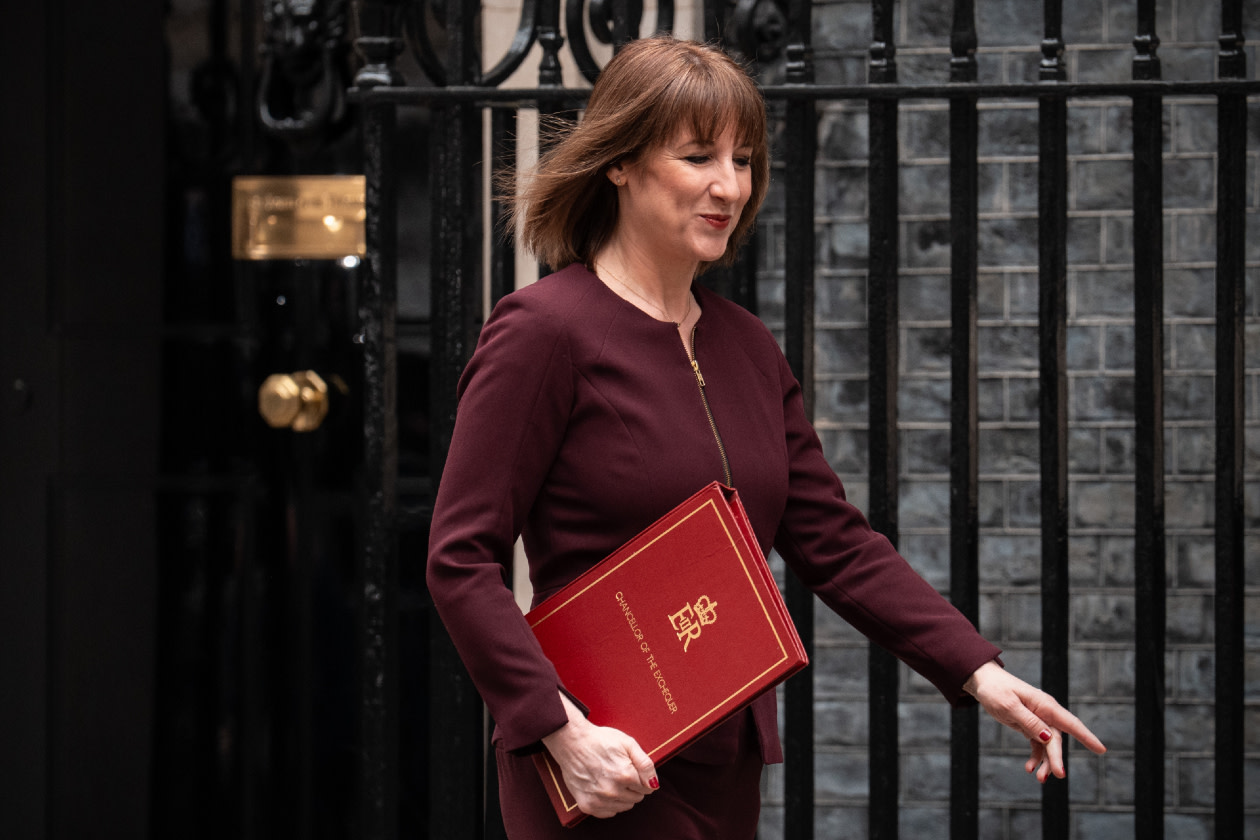Chancellor of the Exchequer Rachel Reeves delivered her first Spring Statement today.
Government spending was the main talking point as pressure is building for Reeves to stay within her budget rules that she set out in October.
Arguably the biggest takeaway for savers and investors was that taxes, and your ISA and pension allowances, were untouched.
However, questions are now circling around how long this will be able to last, with many expecting some bigger tax changes in the Autumn Budget later this year.
For now though, it’s good news.
So, if you haven’t used your allowances yet, it’s a great time to do so before the end of the tax year on 5 April.
Take advantage of our special offers. See what's available for new and existing HL clients. Terms apply.
Here are the main takeaways from the 2025 Spring Statement and what they could mean for your money.
This article isn’t personal advice and is based on our understanding of the Spring Statement. Unlike cash, investments can fall as well as rise in value, so you could get back less than you invest.
ISA, pension, and tax rules can also change, and any benefits depend on your circumstances. If you're not sure what's right for you, ask for financial advice.
How did financial markets react to the Spring Statement?
The chancellor’s Spring Statement was a game of two halves, and it’s been reflected in sharp market movements.
Rachel Reeves appeared to be on the losing side of investor sentiment with downgrades to growth this year, but scoring goals of optimism with upgrades to GDP further ahead.
The UK stock market lost ground and then made handbrake turns as hope rebounded about flickers of growth.
10-year gilt yields also jumped higher, as some bond investors baulked at the extra investment revealed. But they then dropped back as prospects for growth rose, easing the squeeze on public finances.
Housebuilders got a welcome boost amid hopes that a growing economy, ramped up building, and more money in the pockets of buyers will lead to more completions ahead.
The extra defence spending will be welcomed by defence contractors, but there weren’t any significant moves in the share prices of big names. In part, that’s because some of the budget will be reserved for seed investments, startups and accommodation upgrades.
Nevertheless, optimism surrounding the sector remains.
There were no big surprises in this statement, and that’s exactly what the chancellor intended. Stability is right at the cornerstone of the government’s agenda, and she appears to have done the trick of not unnerving investors further.
With eyes trained on investment to propel longer-term growth, the government will still have limited room for manoeuvre to deal with incoming trade disruption. The hope is that the UK will still be seen as a steady, if sluggish, ship in the storm brewing amid the threat of further tariffs from the US.
Taxes unchanged, but for how long?
The economic forecasts made for less grim reading than expected, after Rachel Reeves introduced a surprise twist in the tale. The forecast for growth has been cut for this year, but it has been hiked for every other year of the forecast.
This was welcome good news for the government to be able to share.
The spending cuts have kept Reeves on the right side of her fiscal rules. However, there’s not a vast amount of space in the budget. So, if we don’t get the growth the government is hoping for, there could be tax rises lurking in the Autumn Budget later this year.
The election pledges painted Labour into a bit of a corner, because it promised not to raise any of the big three revenue raisers – income tax, National Insurance or VAT.
If the party sticks with these pledges, it’s going to need to make a myriad of changes to other taxes – and possibly even consider a new kind of tax – to try to close the gap.
What could the government do to taxes?
So far, the government has focused on changes to those things it made no promises on.
Following the Autumn Budget, changes to inheritance tax made waves. Likewise, it added yet another blow for investors with a hike in the capital gains tax rate. And it hiked the stamp duty surcharge for second and subsequent properties.
But these are far from being massive revenue raisers for the government. So, while it will boost the tax take, it’s a drop in the ocean compared to what a small change to one of the big hitters could achieve.
If the government tried to do more of the same in the Autumn Budget, it could end up actually receiving less money.
Once capital gains tax gets high enough, for example, people tend to hoard assets, so there are fewer gains realised and less tax raised.
The threshold has been crushed to a fraction of its former level and the rates on stocks and shares hiked far enough to suggest there’s little more the government can do on this front.
There’s every chance we will see a further freezing of the income tax thresholds.
However, although that will make a significant difference eventually, given that the rates are already frozen until 2028, the government wouldn’t see a boost in the tax take from further freezes for years.
If it needs help to make the sums add up in the interim, then a slow and steady stealth tax likely wouldn’t be enough on its own.
The government could consider tweaks to some of the big hitters to raise the tax take, while being able to say it hasn’t raised the tax.
VAT is enormously complex, so it could introduce a reform that generated more income without raising the overall rate. It will be wary, however, of making changes that generate the kind of backlash we got when George Osborne tried to introduce the pasty tax.
It also has the option of u-turning on its election promises.
This will have an enormous impact politically, but they could decide it has no other choice – and that the political damage done from a number of unpopular choices could be worse than a swift rise in income tax, National Insurance or VAT.
Could we see a new tax?
The debate has already started on whether there might be a new kind of tax altogether, to boost the tax take without breaking any promises.
If the government wanted to stick with a promise of no more taxes for working people, it might focus on taxing wealth, which would raise all kinds of worries among savers and investors.
The government would need to carefully consider the implications of any tax it was considering. You only have to look at the windows in older properties around the country that were bricked up in the wake of the window tax to see not all taxes work out the way governments expect.
What can you do?
You can’t predict the future of tax, so the priority will be to take advantage of the tax-efficient opportunities available to you right now.
Luckily there’s still time to use your all-important tax-free allowances before the end of the tax year on 5 April.
Plus, by using your ISA and pension allowances, you could qualify for our cashback and prize draw offers if you top up your account by 5 April. Terms apply.
(Photo by Carl Court, Getty Images)




